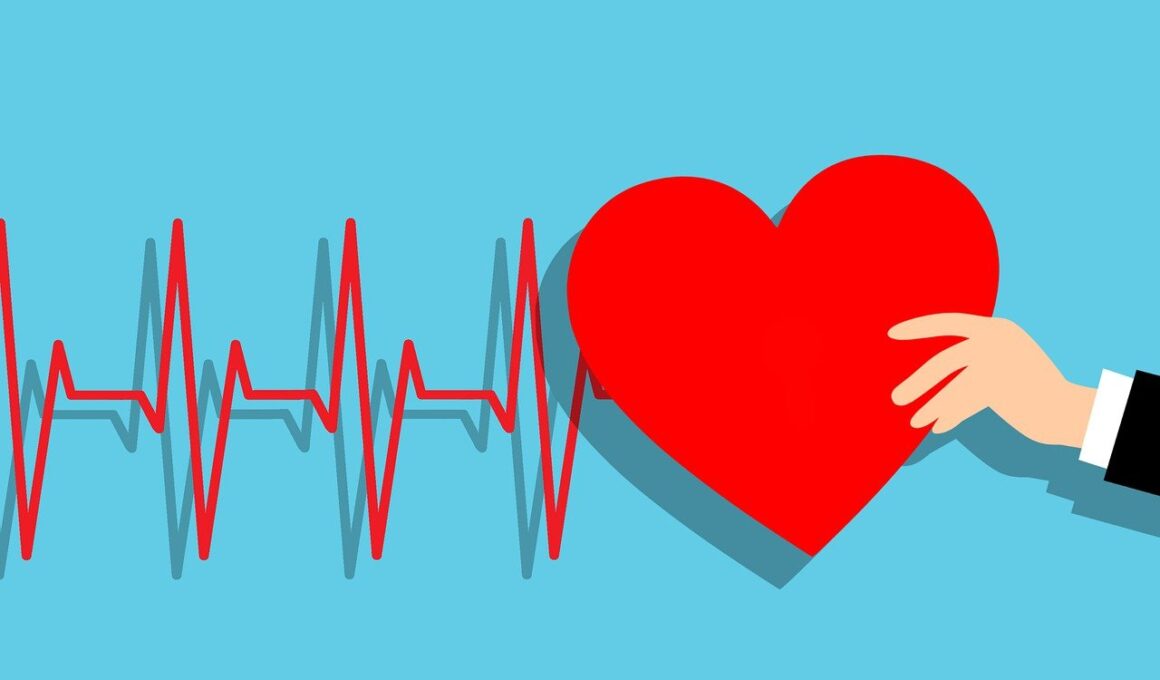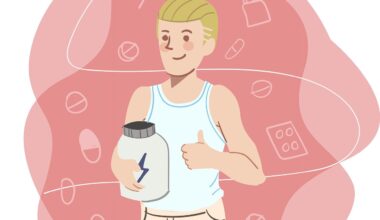Understanding the Relationship Between Heart Rate Zones and VO2 Max
Heart rate zones play a crucial role in understanding and optimizing cardiovascular training. These zones indicate different intensity levels during exercise and help in managing workouts effectively. The primary heart rate zones include resting, moderate, vigorous, and maximal. Monitoring heart rate during these zones provides insights into workout effectiveness and efficiency. By identifying each zone, athletes can tailor their training based on fitness goals. Lower heart rate zones are ideal for building endurance, while higher zones focus on speed and performance. Furthermore, evaluating heart rate during exercise helps with recovery metrics and future training adaptations. Understanding these zones is fundamental for both athletes and casual exercisers. By using heart rate monitors or fitness trackers, individuals can easily track their performance, ensuring they maximize the training effects. Analyzing heart rate variability offers additional insights into overall cardiovascular health. With a clear understanding of these heart rate zones, individuals can make informed decisions regarding their training regimens, leading to improved physical condition and athletic performance. The interplay between heart rate and VO2 max is particularly significant, as it informs the aerobic capacity and overall fitness level.
The Importance of VO2 Max in Cardiovascular Training
VO2 max is a critical measurement in understanding an individual’s aerobic capacity, highlighting the maximum amount of oxygen utilized during intense exercise. It is closely tied with heart rate zones in measuring endurance and fitness progression. Many athletes utilize VO2 max data to design personalized training plans aimed at enhancing performance. Conditioning workouts boost VO2 max, especially when conducted in specific heart rate zones. Training in these zones enables athletes to maximize cardiovascular efficiency. Tracking VO2 max over time helps reflect improvements in fitness levels, allowing athletes to adjust training intensity accordingly. Increasing VO2 max directly influences overall endurance and athletic performance by increasing the body’s ability to transport and utilize oxygen. Consequently, heart rate monitoring becomes essential in achieving targeted VO2 max levels efficiently. Athletes can utilize various tests to measure VO2 max, including treadmill tests or cycle ergometer protocols. Implementing interval training can significantly impact VO2 max improvement by effectively pushing individuals into higher heart rate zones that promote peak oxygen uptake. Understanding this relationship assists in proper programming and periodization of workouts.
Effective training strategies involve incorporating different heart rate zones to optimally improve VO2 max. Long-duration, low-intensity training is crucial for endurance, performed primarily in lower heart rate zones. Here, the body adapts physiologically, allowing improved fat oxidation and enhanced aerobic fitness. Conversely, high-intensity interval training (HIIT) targets maximum heart rate zones, pushing one’s cardiovascular limits. This form of training triggers more substantial physiological adaptations. Combining both steady-state and interval training results in significant improvements in VO2 max and overall fitness. Employing a structured approach that rotates through heart rate zones can yield excellent enhancements in physical performance. Periodic assessments of heart rate and VO2 max should be conducted to determine the effectiveness of training plans. Athletes may observe quick reassessments of heart rate zones during workouts, ensuring adaptation aligns with personal fitness goals. Furthermore, these assessments guide trainers in developing functional training programs that reflect athletes’ specific needs and weaknesses. Ultimately, maximizing the relationship between heart rate zones and VO2 max ensures efficient and effective training outcomes.
Practical Applications of Heart Rate Zones in Training
In practice, implementing heart rate zone training can greatly enhance an athlete’s performance and recovery phases. Various training regimens, such as zone 2 training, emphasize improving fat oxidation and efficiency over time. Athletes focusing on endurance often spend considerable time training in this zone. Zone 4 training, in contrast, emphasizes muscular efficiency and anaerobic threshold. Here, athletes enhance their capacity to perform at intensities where lactic acid starts accumulating. This segment is crucial for improving speed and overall race performance. By incorporating these differing training intensities, athletes significantly influence their VO2 max. Tracking these heart zones during workouts also aids in informing recovery strategies, allowing athletes to adjust their efforts. Subsequently, improved recovery techniques can optimize training adaptations. Implementing technology such as heart rate monitors or smartwatches delivers real-time feedback about an athlete’s performance. Regularly adjusting training based on heart rate feedback supports continuous improvement. The key is balancing workout intensity to ensure fitness levels progress while minimizing overtraining and fatigue. By integrating smart strategies targeting heart rate zones, athletes advance their cardiovascular training significantly.
A deeper understanding of personalized heart rate zones can lead to enhanced VO2 max results. Individual fitness levels influence target heart rate zones, meaning a ‘one size fits all’ approach doesn’t suffice. Heart rate zone training should consider age, fitness levels, and specific goals. Ideally, athletes should consult with fitness professionals to establish personal heart rate metrics effectively. Conducting a maximal heart rate test can help ascertain true heart rate training zones tailored to each individual. Additionally, regular assessments and adaptations in these zones can lead to consistent fitness improvements. Leveraging methodologies such as the Karvonen formula can accurately gauge target heart rates based on resting heart rates. This tailored approach enables individuals to effectively fine-tune their training. As individuals observe changes and improvements in VO2 max, they can derive satisfaction from tangible results. Adjustments in training load influence both heart rate and VO2 max, allowing for a cycle of ongoing improvement. Consequently, athletes learn to recognize and adjust their training focus, thus emphasizing efficiency, performance, and overall well-being as a result.
Monitoring Progress and Adjusting Training
Monitoring training progress involves analyzing heart rate responses and VO2 max regularly. These analyses provide insights into an athlete’s physical adaptations to training over time. One useful method is conducting periodic testing, measuring VO2 max before and after specific training blocks. This way, the effectiveness of training can be quantitively assessed over a period. Moreover, observing changes in maximum heart rates during workouts can signal improvement in cardiovascular fitness. Athletes may adjust pacing strategies to reflect new fitness levels, ensuring workouts remain effective. Documenting these metrics enables a comprehensive understanding of training journeys. A detailed workout log allowing visibility into heart rates promotes informed adjustments to training regimens. Adjusting training loads based on heart rate responses also minimizes the risk of injury, enabling safe progression. In many cases, athletes who stay consistent with heart rate and VO2 max tracking often achieve better performance outcomes. Additionally, shared insights with coaches and peers maintain accountability and motivational support. Using technology to automate tracking removes the manual data collection burden, leading to a more streamlined training process. Combining passion for improvement with data creates a pathway for sustained performance enhancement.
Ultimately, understanding heart rate zones in relation to VO2 max can transform cardiovascular training approaches for athletes and fitness enthusiasts alike. This synergy emphasizes the importance of monitoring, assessing, and continuously adjusting training regimens aimed at improving overall fitness. While every athlete’s journey is unique, leveraging heart rate data offers countless benefits. By grasping the nuances of these relationships, individuals can break through performance plateaus and achieve their goals. Seamless integration of structured training plans focusing on heart rate and VO2 max allows for broad advancements in endurance, speed, and recovery. Furthermore, fostering a commitment to utilizing data tracking brings methodical approaches to training. As awareness grows around the importance of oxygen consumption during exercise, selecting appropriate workouts based on heart rate becomes indispensable. The result is better cardiovascular efficiency and increased performance. Whether working to achieve a new personal best or enhancing overall health, understanding this relationship is vital. As research and innovations in technology progress, athletes can look forward to even more personalized training solutions.
The future of cardiovascular training relies heavily on our understanding of heart rate zones and their impact on VO2 max. By embracing modern technology, individuals can access valuable insights through real-time heart rate monitoring. This empowers them to make immediate adjustments to their training. Additionally, the ongoing research into how these elements correlate continues to inspire innovative training methods. As a result, personalized fitness continues to evolve, catering to diverse needs and ambitions. Community support, combined with technological advancements, creates opportunities for healthy competition among athletes. Engaging with fellow fitness enthusiasts encourages accountability and motivation. By sharing experiences, athletes can learn from one another, further enhancing their performance. The relationship between heart rate and VO2 max will also refine how athletes structure their training sessions. Anticipating performance outcomes and aiding recovery are now achievable through scheduled assessments of VO2 max. Furthermore, ongoing education will be fundamental for individuals pursuing excellence in sports. Empowering athletes with quality knowledge of their physiological responses lays the groundwork for success. Ultimately, those who harness the relationship between heart rate zones and VO2 max are well-positioned to excel in their training endeavors, embracing a future filled with athletic achievements.


